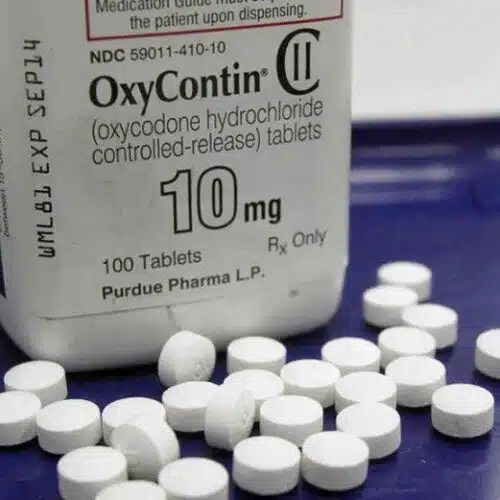[vc_row][vc_column][vc_column_text]Diabetes is a condition characterized by excess glucose in the blood.
This elevation of blood sugar can result in a host of symptoms, including fatigue, increased hunger and thirst, irritability and frequent urination.
Type 1 diabetes
Some people may refer to this type as insulin-dependent diabetes, juvenile diabetes, or early-onset diabetes. People usually develop type 1 diabetes before their 40th year, often in early adulthood or teenage years.
Type 1 diabetes is nowhere near as common as type 2 diabetes. Approximately 10% of all diabetes cases are type 1.
Patients with type 1 diabetes will need to take insulin injections for the rest of their life. They must also ensure proper blood-glucose levels by carrying out regular blood tests and following a special diet.
Type 2 diabetes
The body does not produce enough insulin for proper function, or the cells in the body do not react to insulin (insulin resistance).
Approximately 90% of all cases of diabetes worldwide are type 2.
Some people may be able to control their type 2 diabetes symptoms by losing weight, following a healthy diet, doing plenty of exercise, and monitoring their blood glucose levels. However, type 2 diabetes is typically a progressive disease – it gradually gets worse – and the patient will probably end up have to take insulin, usually in tablet form.
Overweight and obese people have a much higher risk of developing type 2 diabetes compared to those with a healthy body weight. People with a lot of visceral fat, also known as central obesity, belly fat, or abdominal obesity, are especially at risk. Being overweight/obese causes the body to release chemicals that can destabilize the body’s cardiovascular and metabolic systems.
Gestational diabetes
This type affects females during pregnancy. Some women have very high levels of glucose in their blood, and their bodies are unable to produce enough insulin to transport all of the glucose into their cells, resulting in progressively rising levels of glucose.
Diagnosis of gestational diabetes is made during pregnancy.
The majority of gestational diabetes patients can control their diabetes with exercise and diet. Between 10% to 20% of them will need to take some kind of blood-glucose-controlling medications. Undiagnosed or uncontrolled gestational diabetes can raise the risk of complications during childbirth. The baby may be bigger than he/she should be.
29.1 million US children and adults (9.3% of the population) have diabetes.
The Past
Insulin therapy and glucose monitoring are very common in the treatment of diabetes. Metformin is a commonly prescribed pharmaceutical. Severe cases of diabetes can require a pancreatic transplant. Healthy diet and lifestyle are essential components of successfully treating the condition.
About Marijuana
The manner with which cannabinoids interact with insulin is believed to be related to increased carbohydrate metabolism. THC is currently the most documented cannabinoid treatment for diabetes. There is also relevant research emerging on the effects of CBD and THCV for treatment of the condition. The synthetic cannabinoid, Sativex, has also been proven effective.[/vc_column_text][vc_btn title=”DIFFERENCE BETWEEN CBD & THC” shape=”square” color=”inverse” size=”lg” align=”left” i_icon_fontawesome=”fa fa-sign-out” css_animation=”fadeIn” add_icon=”true” link=”url:http%3A%2F%2Fmedicalmarijuana411.comdifference-between-cbd-thc-medical-marijuana%2F|||” css=”.vc_custom_1508549735642{margin-top: 40px !important;margin-bottom: 40px !important;}”][vc_column_text]American Alliance for Medical Cannabis (AAMC) provided a study that cannabis can have the following benefits for diabetes patients:
- stabilizing blood sugars (confirmed via “a large body of anecdotal evidence building among diabetes sufferers”)
- anti-inflammatory action that may help quell some of the arterial inflammation common in diabetes
- “neuroprotective” effects that help thwart inflammation of nerves and reduce the pain of neuropathy by activating receptors in the body and brain
- “anti-spasmodic agents” help relieve muscle cramps and the pain of gastrointestinal (GI) disorders
- acts as a “vasodilator” to help keep blood vessels open and improve circulation
- contributes to lower blood pressure over time, which is vital for diabetics
- substituting cannabis butter and oil in foods “benefits cardiac and arterial health in general”
- it can also be used to make topical creams to relieve neuropathic pain and tingling in hands and feet
- finally, cannabis helps still diabetic “restless leg syndrome” (RLS), so the patient can sleep better: “it is recommended that patients use a vaporizer or smoked cannabis to aid in falling asleep.”
The Process
The smoking and vaporization of cannabis, as well as the administration of cannabis extract oils are the most common methods reported by individuals with diabetes.[/vc_column_text][vc_btn title=”VIEW ALL CANNABIS MEDICATION TYPES” shape=”square” color=”inverse” size=”lg” align=”left” i_icon_fontawesome=”fa fa-sign-out” css_animation=”fadeIn” add_icon=”true” link=”url:http%3A%2F%2Fmedicalmarijuana411.com%2Fcannabis-medication-types%2F|||” css=”.vc_custom_1508025235519{margin-top: 40px !important;margin-bottom: 40px !important;}”][vc_column_text]
Diabetes Patient That Uses Medical Marijuana
While counterintuitive to long-held stereotypes, research shows that cannabis users are less obese than non-users. Given the correlation between obesity and diabetes, cannabis appears to provide assistance to those with the condition in the proper management of their weight and diet. The stabilizing of blood sugars, reduction of arterial inflammation, and contribution to lower blood pressure have all been reported by sufferers of diabetes.
In a 2011 report featuring data from the Third National Health and Nutrition Examination survey, researchers revealed that cannabis users had a significant advantage in fighting and preventing diabetes. As stated in the CNN article “Marijuana: The Next Diabetes Drug”, the survey of over 4,600 individuals produced thought-provoking results:
Among them, 48% had smoked marijuana at least once in their lives, and 12% were current cannabis smokers. The authors controlled for other factors like age, sex, income, alcohol use, cigarette smoking and physical activity that could also affect diabetes risk. Even after these adjustments, the current marijuana users showed fasting insulin levels that were 16% lower than those of former or never users, along with a 17% reduction in another measure of insulin resistance as well. Higher levels on both tests are associated with Type II diabetes, which is linked with obesity. Marijuana users also had higher levels of high-density lipoprotein, the so-called good cholesterol, which can protect against heart disease. And the regular smokers also boasted smaller waistlines: on average, they were 1.5 inches slimmer than the former users and those who had never smoked cannabis.
[/vc_column_text][/vc_column][/vc_row]


